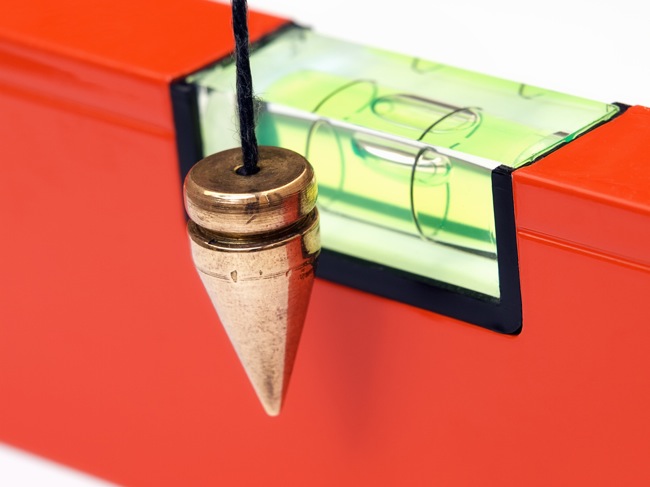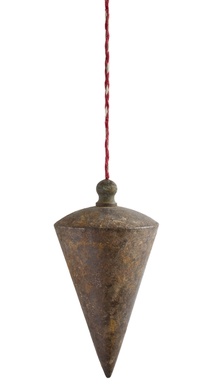

We may earn revenue from the products available on this page and participate in affiliate programs. Learn More ›
This tool has ancient origins. Evidence suggests that Egyptian architects used plumb bob-like tools to establish verticals in constructing the pyramids. (It’s also thought that, in tandem, they used flooded ditches to determine levels.) Plumb bobs may weigh as little as an ounce or as much as several pounds, depending upon the application. For most home toolboxes, I recommend having a single bob that weighs a few ounces. As is so often the case, it isn’t how fancy the tool is, but how well you use it.
What Is a Plumb Bob?
The plumb bob or plumb line employs the law of gravity to establish what is “plumb” (that is, what is exactly vertical, or true). You don’t have to be a physics whiz to understand that a string suspended with a weight at the bottom will be both vertical and perpendicular to any level plane through which it passes. In a sense, the plumb bob is the vertical equivalent of the line level.
The plumb consists of a specially designed weight and coarse string made of twisted cotton or nylon threads. (Masons prefer nylon because it stands up better over time to the dampness that comes with the trade.) At one end of the string the weight is affixed. Precisely machined and balanced bobs have pointed tips, and can be made of brass, steel, or other materials, including plastic.

How to Use a Plumb Bob
To use the tool, the string is fixed at the point to be plumbed. The weight, or bob, is then allowed to swing freely; when it stops, the point of the bob is precisely below the point at which the string is fixed above. (Note that the line must be hanging free to get an accurate reading.)
The plumb bob is useful in establishing vertical for a wall in construction or a doorjamb when hanging a door. A spirit level will also accomplish those tasks, but some jobs are much more easily done using the tool. For example, you can locate fixtures or decorations in relation to an object or surface below (or above) using the plumb line. Once it is hung and still, the top and bottom points can be marked and used as guides. The plumb line in one place can be used to sight an object in another — a pipe, for example — for plumb.
Surveyors sometimes use plumb bobs for lining up points or transferring them. Excavation and foundation contractors rely upon the plumb line, and constructing a chimney the tool can indicate whether a flue is running true vertical or veering off plumb.
Some bobs have pointed tips that can be bent by repeated use or abuse; if the point on yours is bent or out of alignment, replace it.
